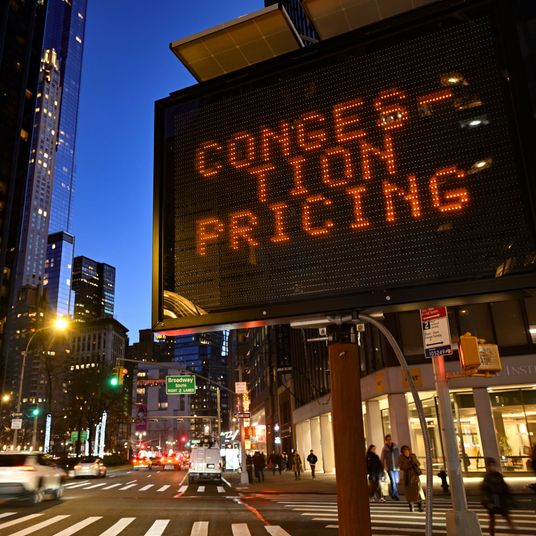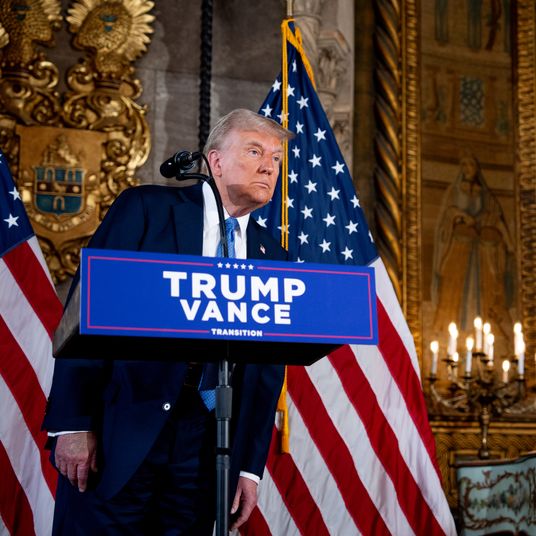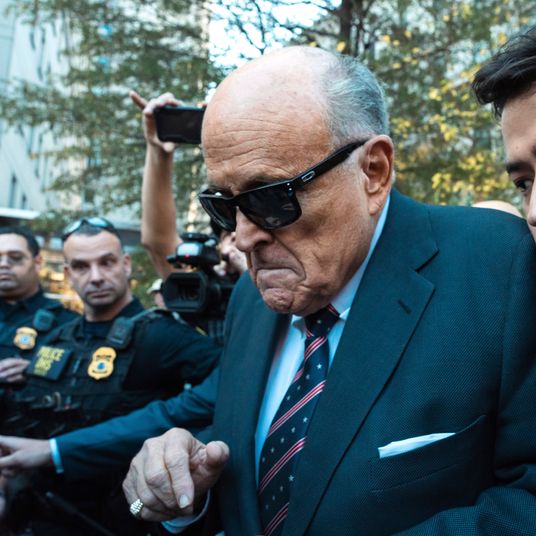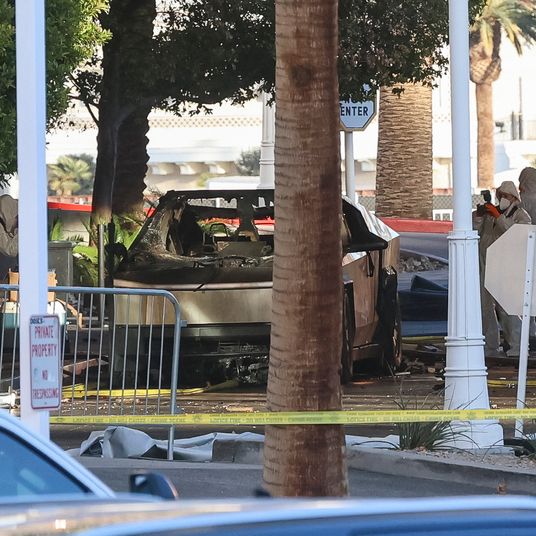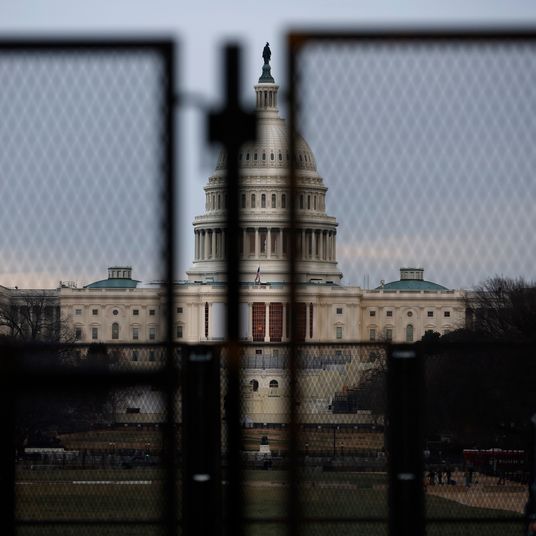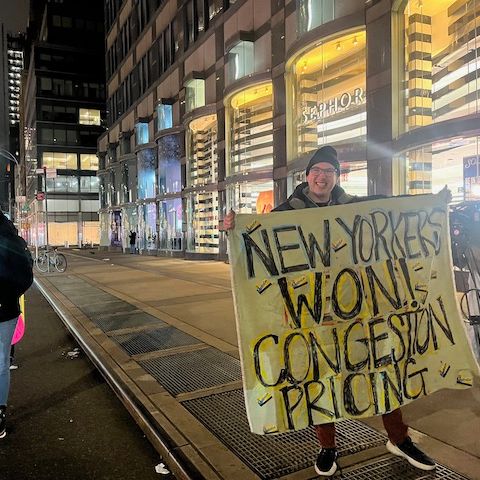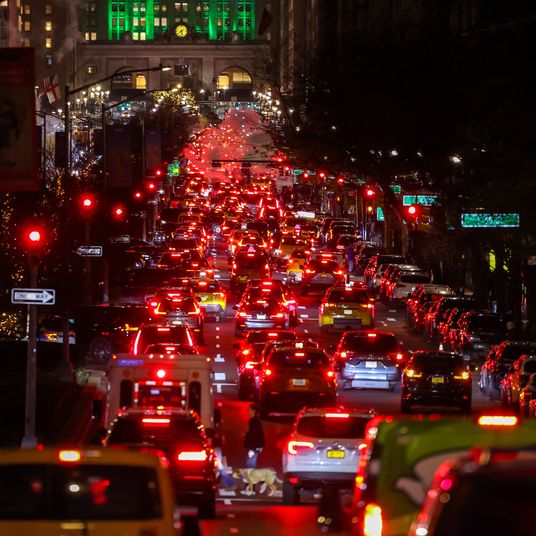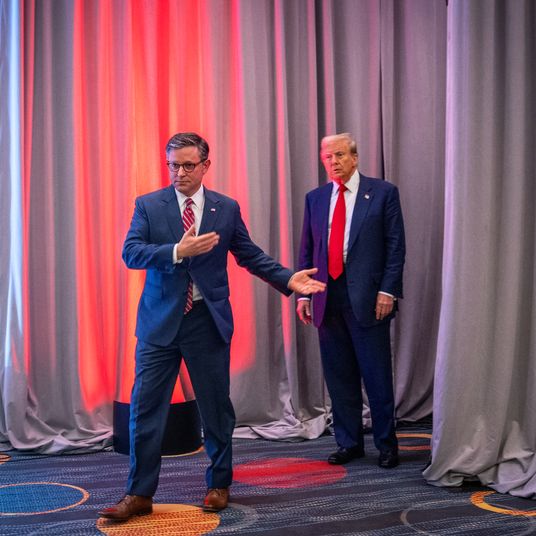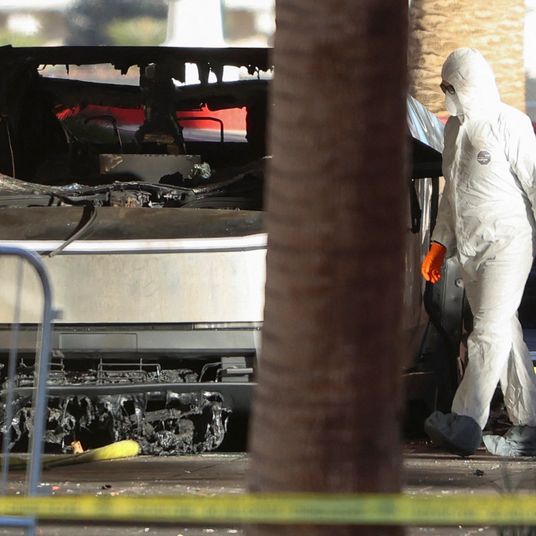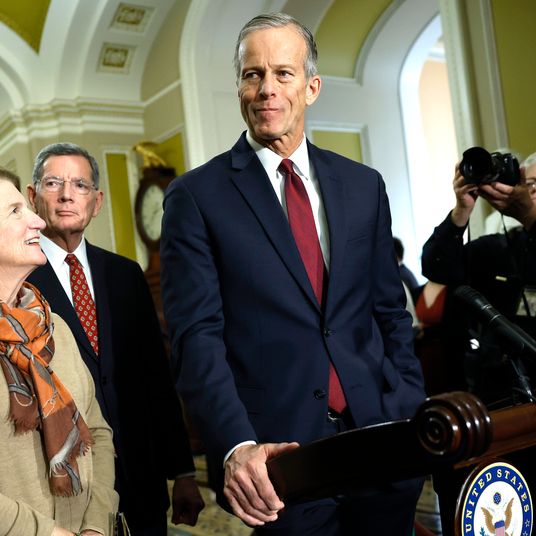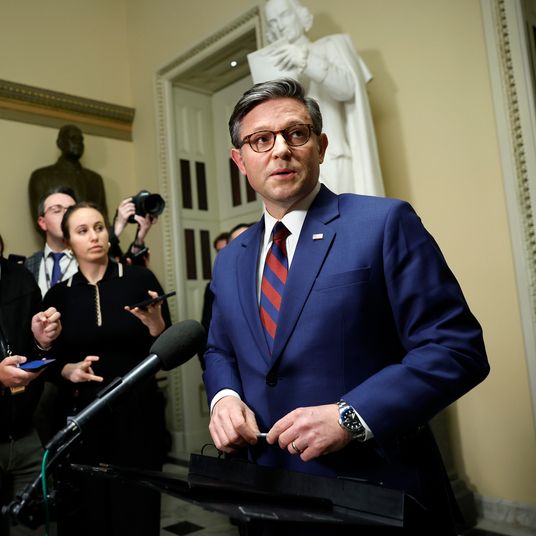
Donald Trump has repeatedly promised that come January 20, he will institute the biggest mass deportation in American history. He has appointed Stephen Miller and Tom Homan, two voluble and competent immigration hard-liners, to pursue his draconian agenda, and says he will use the military, among other agencies, to carry it out. But Trump’s grand plans will almost certainly crash into a more prosaic reality, one dotted with bureaucratic roadblocks and political hurdles. Dara Lind, a senior fellow at the American Immigration Council, recently wrote an illuminating New York Times op-ed about how the logistics of mass deportation might — or might not — actually work. (Lind worked at Vox.com for several years.) I spoke with her about what the first few weeks of the Trump administration might look like for undocumented immigrants, why the U.S.-Mexico relationship is so key to hard-line policies, and whether the American public will do less protesting this time around.
You wrote in the Times: “The question is not whether mass deportation will happen, it’s how big Mr. Trump and his administration will go and how quickly.” That was about six weeks ago. Have you gleaned anything further since then about how the new Trump administration is approaching this?
It’s really tough to do that in the pre-inauguration environment, because there’s no cost to the Trump team in leaking stuff that they may not in fact be willing to marshal a whole lot of internal capital to push as a priority.
Which scares the people they want to scare.
It has a chilling effect. If I were in their position, I would be thinking a whole lot about what are things that would be most advantageous to us in creating the kind of environment we want to leak rather than what are the things that we actually think we can get done on day one.
The first time around, they just didn’t have the staffing to do a lot of things. There were a lot of agencies that were just in holding patterns for weeks or months because they hadn’t bothered to put the people in to do things differently than the Obama administration. This time around, they do appear to have learned that lesson. They have staffed up a much more traditional transition operation, and a more aggressive one. But there are still questions about how quickly they can learn internal operations, not just of the immigration enforcement agencies, but everything else they’d have to do for a really maximalist enforcement operation. Those are things that we’re not going to learn on day one.
It’s going to be a mix of what they are announcing — which is going to tell us some things about major policy changes but will tell us less about just how much oath they’re putting into them operationally — and stuff we’re hearing from people on the ground. A lot of the most important changes to how U.S. Citizenship and Immigration Services adjudicated immigration applications were not things that they made announcements about. They’re things that a few immigration lawyers were chatting to each other and said, “I’m also seeing this.” And then you get enough data points in enough parts of the country to realize that this is actually a change in policy. So it’s going to be a mix of the kind of top-down stuff and then figuring out how far that percolates to the ground, and stuff that’s bubbling up from the ground, piecing it together and realizing that it’s a directive coming from the top.
You’ve floated the possibility of the Trump administration just breaking rules to get their immigration goals met, and it’s very hard to predict the consequences of that. But let’s say they do work within the confines of the law and just pursue the maximalist strict deportation policy that they can get away with at the beginning. One thing I took from your article is that they’re not going to deport 2 million people in the first week because it’s impossible legally to do that. Is that right?
The two buckets that I expect this stuff to fall into are the bucket of high visibility/uncertain efficacy and the bucket of high efficacy/uncertain visibility. In the first bucket is marching hundreds of ICE agents into Chicago and having a big standoff with the mayor there. In the second bucket is targeting people who don’t have to go through immigration court again because they’ve already gone through immigration court and have already been ordered deported. They don’t have to go into communities to find those people, so it takes fewer resources to conduct enforcement operations against them. But the thing that’s going to be most politically appealing and least resource-intensive is people who are already in criminal custody.
And deporting people in that category is probably overwhelmingly popular.
Right, especially in places where they already have cooperation with local law enforcement. But that’s already current policy — communication between ICE and local law enforcement about database checks that often reveal the immigration status of somebody who’s in custody. All of that has been going on for the last 15-plus years. So if somebody is being picked up for the first time since 2007, yeah, you’re going to get a ping. But otherwise, that person has probably already come to the attention of the federal government.
Similarly, there are a lot of people with final orders of removal who are still in the United States, and those orders haven’t been executed yet. In some cases, that’s because ICE has looked at them and said, “It’s not worth it to us to deport you. We’re going to just give you an ankle bracelet, but you’re going to be allowed to just stay here. Come back to us in six months and we’ll tell you if you’re going to get deported yet.” We saw in the first Trump administration that those were cases where people really were likely to get hoovered up. Again, that’s really low-visibility because it involves literally walking into an ICE check-in office and getting scooped up there.
But in a lot of those cases, the reason that ICE can’t deport people is that the country to which they’d be going doesn’t accept deportation flights or is accepting only a few. One of the very first leaks after Election Day was that the Trump administration would go after military-age Chinese men and deport them. To those of us who know how the operations of this work, that was a very suspicious leak because China has not been accepting nearly as many deportation flights as there are deportable Chinese nationals.
You can’t just force foreign countries to play this game.
So the idea that they would be targeting those people for arrest and deportation — they could do that, but they’d have to find somewhere to put them for a pretty long period of time, and then they’d run into Supreme Court precedent that says you can’t detain people indefinitely. So are they really going to do it? Or is that just a rumor they’re putting out there? And a rumor that’s already bubbling up in Chinese immigrant communities because they’re worried about it and they feel already somewhat under attack, and which you’re going to encourage?
And the question of who is low-hanging fruit already runs into all of these other questions. Will the Trump administration put their efforts toward building out more detention space? Will they put their efforts into playing hardball with a lot of countries and forcing them to accept more deportation flights? Where are they putting their energy in your first week?
I think people imagine ICE agents swooping into cities and just disappearing people.
The black-and-white letter of federal law is that right now under President Joe Biden, there is nothing stopping ICE from swooping into any given U.S. city, knocking on a whole lot of doors, asking people if they are in the U.S. legally, and if they can’t give them a satisfying answer, putting them into custody and putting them in removal proceedings. The reason they don’t do that is that, for one thing, it’s surprisingly hard to determine whether somebody is unauthorized if they don’t tell you outright. But also because ICE doesn’t necessarily have the human resources for that, and it doesn’t want to put its agents in those situations.
One of the biggest reasons that there’s this really strong preference for picking people up from jails and prisons isn’t just the fact that they’ve already contact with the criminal justice system. It’s that it’s much safer for a team of ICE agents to go into a jail and pick somebody up who’s already in handcuffs than it is for them to go into a neighborhood and not necessarily have full operational awareness of who’s in the house next door. Is it common that ICE agents get attacked? No, absolutely not. But they’re thinking about their own physical security as much as they’re thinking about the politics of it.
Those concerns don’t go away. It’s just that if you have political leadership that isn’t sensitive to those concerns — Tom Homan, for example, has always been very big on trying to maximize feelings of insecurity. He said a lot during his stint under Trump the first time around that if you’re here illegally, you should be afraid. That’s a really big part of his theory of how this is going to happen. So leadership may be pushing for the big showy stuff. But even if you have leadership pushing that, it doesn’t mean that everything that happens after arrest doesn’t immediately fall into place.
Largely because of all the logistical hurdles involved?
My organization put out a report estimating the costs of mass deportation, and the four stages of the process that are real question marks on costs are arrest, detention, putting people through immigration court, and the actual deportation. Some people don’t have to go through all four of those. If you’re already in custody in a jail somewhere, the arrest costs are much lower. If you’ve already been ordered removed, you don’t have to go through immigration court again.
But everybody has to get physically removed and everybody has to get detained, unless you’re going to just put a bunch of people back out into communities with ankle bracelets. At that point, the question of are you engaging in something all that different from what is going on right now, when most of the people who the Biden administration released into the U.S. after crossing and getting caught by border patrol have theoretical court dates in the future? They’re already known to the system, it’s just that they haven’t been ordered removed. What’s the difference between that and somebody you’re arresting for the first time and then putting an ankle bracelet on and releasing? It becomes a little bit academic.
Under the Biden administration, there was obviously a huge surge in migration across the southern border, and public opinion turned quite a bit to the right on the issue, prompting Biden to crack down. When Trump inevitably pursues an extreme policy like family separation or something we can’t imagine yet, do you think that that sort of shifting of public attitudes might temper the kind of outrage we saw in the early days of his first administration?
It wasn’t like Trump got elected in 2016 despite people really caring a whole lot about immigrants; there was a really notable shift in public opinion in early 2017 as Trump took office. My bottom line on this stuff is that with the exception of hard-core conservatives who have taken a hawkish position on immigration, most of the voting public doesn’t have really strong opinions on immigration. So there can be big swings when things change, whether that’s the political landscape or events on the ground. But those swings don’t necessarily reflect themselves in really hard-core committed activists turning out. 2017 was surprising because it wasn’t just a big swing in the valence of public opinion, but a big swing in how important it was to a large swath of the anti-Trump center-left.
One of the things I think might be different this time is that, unlike in 2017, when it was very clear that immigration was the one thing they’d thought a lot about changing on day one, this time there’s a lot of stuff they’ve said they want to change. Having the Project 2025 mandate for leadership out there — as little as the Trump camp appreciated it during the campaign — has had the effect of taking everybody who has a particular issue that they are interested in and concerned about and making them feel like their issue is under attack.
Flooding the zone with fear.
And it’s not that they’re wrong — obviously the federal government is very large, and it can do a lot of things at once. But it does mean that unless you already cared strongly about immigration, there’s not a whole lot telling you that you should mobilize on immigration as opposed to being mobilized on whatever your primary issue was. The other thing is family separation. And I want to take a sidebar here to point out that it’s always been the policy of the U.S. that if you are an unauthorized immigrant who has children here who are native-born U.S. citizens that you can be ordered deported. Like, there isn’t an exception.
Yes, people talk about anchor babies, and yes, there is a way that an adult U.S. citizen can ultimately petition for their parents to become legal immigrants in the U.S., but the provisions that allow you to be exempted from deportation because you have roots in the U.S. including children who are born here are extremely limited and extremely tight. And I’ve literally been in the courtroom when a judge is telling a family that the fact that their kids would have to move to a place they’ve never lived before isn’t a sufficient reason to withhold an order of deportation.
But it was the element of surprise that people really reacted to. Parents and children didn’t know what they were getting into, and then they were yanked away from each other.
If you don’t have images of kids being forcibly taken from their parents, if the parent has a choice, we have seen that that is less compelling to people. Because I think there’s a certain willingness of “as long as you’re making the choice, then you deserve the consequences.” And in general, after family separation in 2018, we’ve seen a lot less willingness from the people who were showing up in airports in 2017 to engage on immigration.
For me and for a lot of other people who were paying attention during the first Trump term, it wasn’t family separation in 2018 that really sticks with us. It was the Remain in Mexico policy of 2019. Because there was tremendous humanitarian distress on the Mexican side of the border camps, where there was no clean water, no food, no personal safety, and a lot of incursions from organized and semi-organized crime. There was great press coverage of it, but nobody appeared to care. And even when it became clear that parents were sending their kids into the U.S. alone — separating their families — rather than letting them live in Mexico under this policy any longer, that still didn’t mobilize people.
So all of that makes me think that anyone who expects there to be massive turnout in the streets of the kind we saw in response to the travel bans in 2017 or to the zero-tolerance policy in 2018 is making assumptions that aren’t necessarily borne out on the ground. If there’s going to be mass mobilization and pushback, it’s probably going to take some work. It may take the administration making some political missteps or overestimating the extent to which the public will go along, which is not impossible.
Which seems quite probable.
Exactly. But also, this is only going to become visible if there’s a certain amount of friction to begin with. In a world where Eric Adams successfully orders NYPD to disobey state and local law and just turn people over to ICE, there won’t be visuals in the same way there would be if ICE had to be engaging in removal operations in New York.
So, it becomes this ratchet, right? If you don’t already have a public that is up in arms about this, local officials will make different decisions. And if local officials make different decisions, it won’t generate the kinds of moments that would galvanize public opinion.
Meanwhile, the situation at the Mexican border has died down quite a bit. Biden has sharply tightened asylum rules, and crossings are way down recently. How do you expect things to change there once Trump comes into office, if at all? Is it even possible for a president to make border policies much stricter than they are?
As much as White House officials of both parties love to believe that the most important factor in how many people are coming to the U.S.-Mexico border is U.S. policy, the most important factor is actually what Mexico is doing. The trend we saw in 2024 wasn’t that Biden handed down a restrictive executive order in May and then crossings started falling. It becomes a really interesting question under the Trump administration, because under the first one, how much Mexico was doing to interdict people became a massive flashpoint of U.S.-Mexico policy. Remain in Mexico got expanded borderwide after Trump threatened, to an extent that Mexico appeared to see as credible, to unilaterally impose massive tariffs.
So how much effort is Mexico putting into interdicting people going north? Are they going to allow us to reinstate Remain in Mexico for people who we catch and then send to them, even though they’re not Mexican nationals, to wait for court hearings? And will they accept people from other countries as deportations, as removals? Which is how the Trump administration would get around other countries not taking them back.
That’s a really robust immigration agenda that they have to get Mexico’s cooperation on. And they’re threatening tariffs, and there’s this continued saber-rattling about how we’ll go into Mexico with the military.
They’re very clear in their priorities. The Biden administration was asking for things on immigration, but also asking Central America for things on human rights and transparency and anti-corruption, and also trying to combat Chinese investment in the area, and all of that kind of thing. And it’s easier to negotiate if there are whole issues you’re willing to say you don’t care about. But it’s harder to negotiate if you’re also saying that you want to just march the military in. Mexico, of course, has a new president. The outgoing president López Obrador was very buddy-buddy with Trump, and the incoming president, Claudia Sheinbaum, is a protégé of his.
Yeah, and she’s indicated that she’ll work with him.
But at the same time, Mexico is working on an app for Mexican nationals, and they’re trying to expand shelter space for deported Mexican nationals.
It does appear they take the incoming Trump administration seriously enough to anticipate that they’ll have to take a lot of Mexican nationals back. How much capacity they feel they have for everybody else is an open question. So, that is the most important relationship. Panama is also a little bit important, just because it’s a choke point. But what happens at the border, and also how much Trump can do to remove people from the U.S., given the shell game of accepting nonnationals — the U.S.-Mexico relationship is going to be so essential to that.
This interview has been edited for length and clarity.
More From This Series
- How Worried Should We Be About the Latest Bird-Flu Mutation?
- They Shocked Assad and the World. What Will They Do Next?
- How Trump Could Attack Trans Rights








